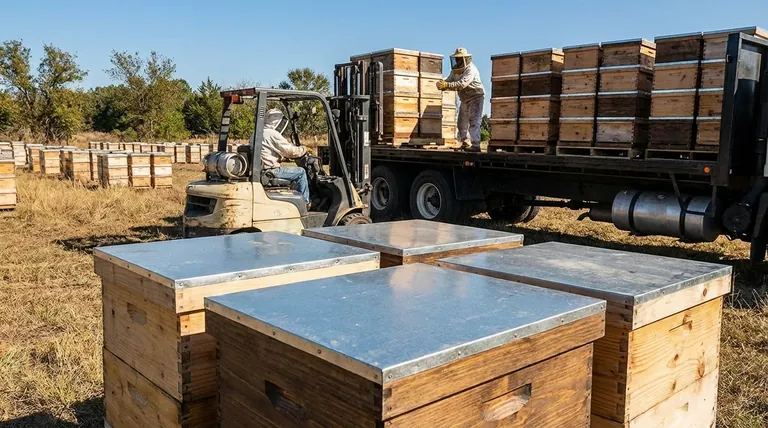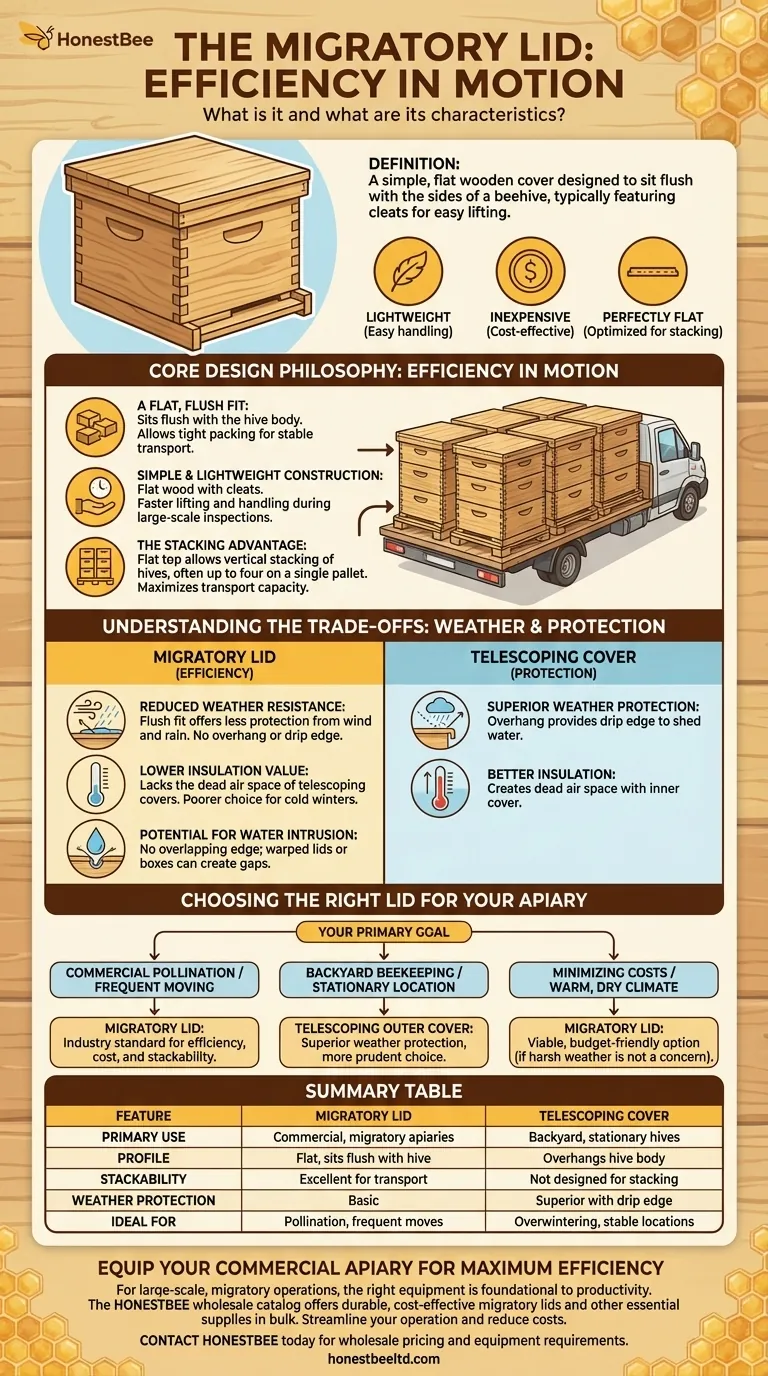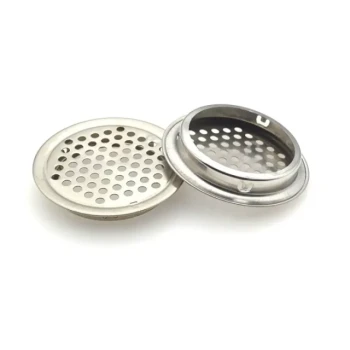In beekeeping, a migratory lid is a tool of pure efficiency. It is a simple, flat wooden cover designed to sit flush with the sides of a beehive, often with cleats on the ends for easy lifting. Its primary characteristics—being lightweight, inexpensive, and perfectly flat—are not accidental; they are optimized for beekeepers who frequently move their hives for pollination or honey production.
The migratory lid prioritizes speed, cost, and transportability over maximum weather protection. Choosing it over a more robust telescoping cover is a strategic decision based on whether your beekeeping operation is mobile and at-scale, or stationary and focused on individual hive resilience.

The Core Design Philosophy: Efficiency in Motion
The design of the migratory lid is intentionally minimalistic. Every feature serves the central purpose of making hives easier to manage and transport in large numbers.
A Flat, Flush Fit
The most critical design element is that the lid sits flush with the hive body's sides. Unlike telescoping covers that overhang the edges, this flat profile allows hives to be packed tightly against one another.
This direct contact is essential for securing a load. It creates a stable, interconnected block of hives on a truck bed or pallet, minimizing shifting during transit.
Simple and Lightweight Construction
A migratory lid is typically just a flat piece of wood with two wooden cleats on opposite ends. These cleats serve as handles, making the lid easy to lift and remove quickly.
This simplicity makes them significantly lighter and easier to handle than their telescoping counterparts, a crucial factor when an apiarist needs to inspect dozens or hundreds of hives in a day.
The Stacking Advantage
Because the tops are flat, hives with migratory lids can be stacked. Commercial beekeepers often place up to four hives on a single pallet, and the flush-fitting lids ensure they form a neat, secure unit.
This density maximizes the number of hives that can be moved at once, which is fundamental to the business model of a commercial, migratory apiary.
Understanding the Trade-offs: Weather and Protection
While the migratory lid is a model of efficiency, its design comes with clear trade-offs that make it unsuitable for certain contexts.
Reduced Weather Resistance
The lid’s flush fit offers less protection from wind and rain compared to a telescoping cover, which overhangs the hive body and provides a drip edge to shed water away from the hive entrance and joints.
Lower Insulation Value
Telescoping covers, when used with an inner cover, create a dead air space that provides an extra layer of insulation. The migratory lid lacks this feature, making it a poorer choice for regions with cold winters and frost.
Potential for Water Intrusion
Because there is no overlapping edge, a perfect seal between the lid and the top hive box is not guaranteed. A slightly warped lid or box can create a gap where water can more easily penetrate the hive.
Choosing the Right Lid for Your Apiary
Your choice of lid should directly reflect the primary goal of your beekeeping operation.
- If your primary focus is commercial pollination or moving hives frequently: The migratory lid is the industry standard for its efficiency, cost-effectiveness, and stackability.
- If your primary focus is backyard beekeeping in a stable location: The superior weather protection of a telescoping outer cover is almost always the more prudent choice.
- If your primary focus is minimizing costs in a warm, dry climate: A migratory lid can be a viable, budget-friendly option even for stationary hives, provided harsh weather is not a significant concern.
Ultimately, selecting the right hive cover is about matching the equipment's design to the demands of your specific beekeeping environment and goals.
Summary Table:
| Feature | Migratory Lid | Telescoping Cover |
|---|---|---|
| Primary Use | Commercial, migratory apiaries | Backyard, stationary hives |
| Profile | Flat, sits flush with hive | Overhangs hive body |
| Stackability | Excellent for transport | Not designed for stacking |
| Weather Protection | Basic | Superior with drip edge |
| Ideal For | Pollination, frequent moves | Overwintering, stable locations |
Equip Your Commercial Apiary for Maximum Efficiency
For beekeepers running a large-scale, migratory operation, the right equipment is not a luxury—it's the foundation of your productivity and profitability. The HONESTBEE wholesale catalog is built specifically for your needs, offering durable, cost-effective migratory lids and other essential supplies in bulk quantities.
We supply commercial apiaries and beekeeping equipment distributors with the high-quality, transport-optimized gear required to manage hundreds of hives efficiently. Let us help you streamline your operation and reduce costs.
Contact HONESTBEE today for wholesale pricing and to discuss your specific equipment requirements.
Visual Guide

Related Products
- Telescopic Beehive Outer Cover Lid Roof with Galvanised Sheeting for Langstroth Hive and Beehive Outer Cover
- Inner Beehive Cover for Beekeeping Bee Hive Inner Cover
- Professional Insulated Winter Hive Wrap for Beekeeping
- Professional Drop-Style Hive Handles for Beekeeping
- Stainless Steel Round Beehive Air Vents for Ventilation
People Also Ask
- What is the function of the top cover in a Langstroth hive? Master Hive Protection & Climate Control
- How do you install the Langstroth hive roof? A Step-by-Step Guide for a Healthy Colony
- What is a telescoping outer cover and what are its advantages? Maximize Hive Protection in Harsh Climates
- What are the two primary lid styles for Langstroth style beehives? Choose the Right Protection for Your Hives
- Can bees enter from both sides of the outer cover? Master Seasonal Hive Management



















